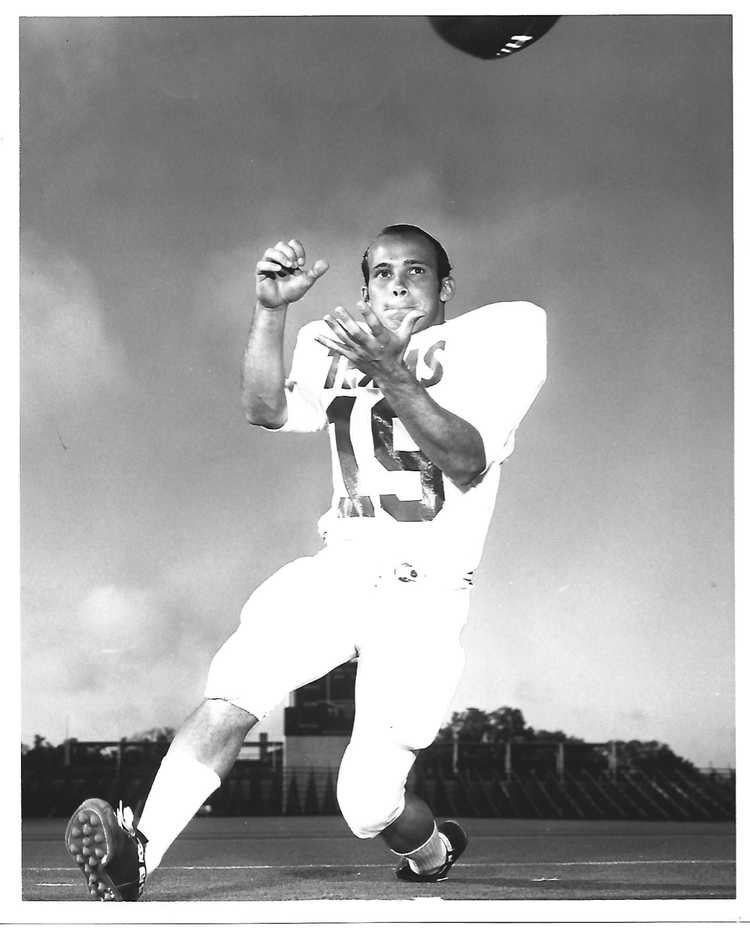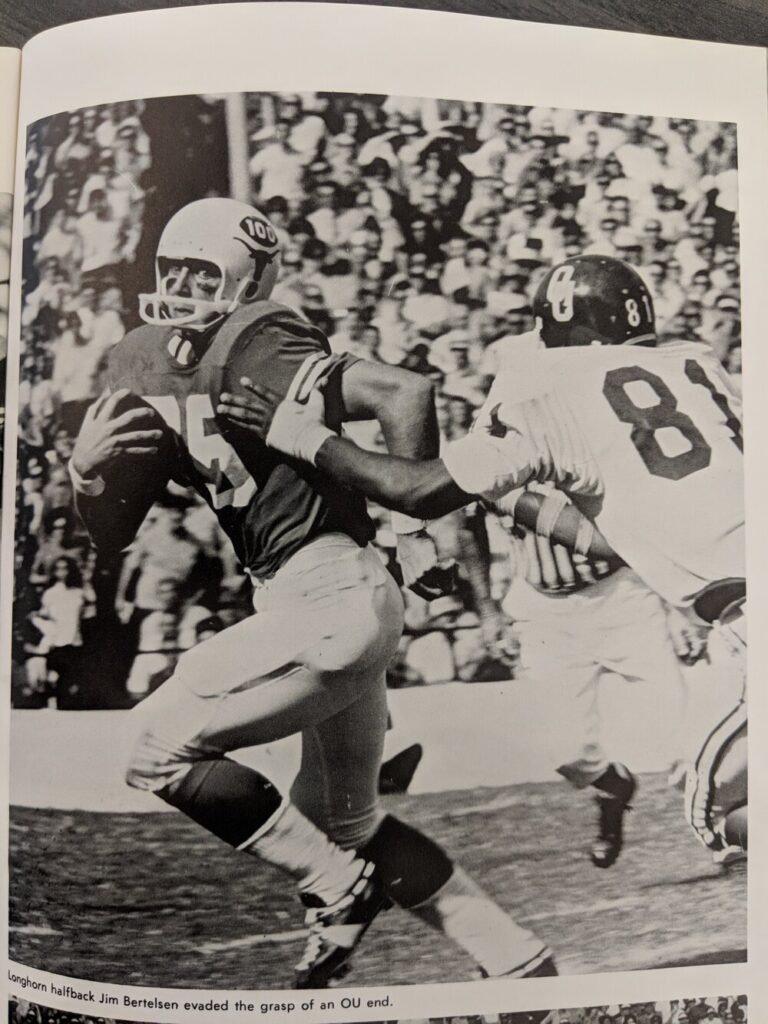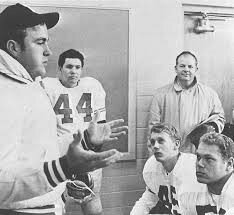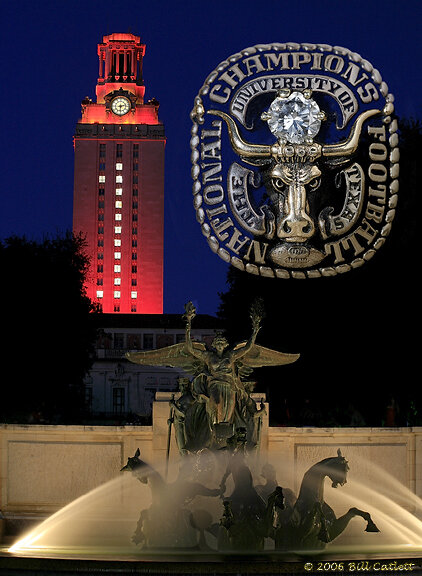Top of the Queue Volume VII newsletter # 26 12/15/2023
TLSN is not associated with the UT Athletic Department or any organization closely aligned with UT.
|
The late Congresswoman Barbara Jordan answered the question, “Why do sports matter so much?”
As the Longhorns embark on the national championship journey, the late Barbara Jordan reminds us there is no “I” in team. Focusing solely on oneself prevents us from recognizing the common good. The 2023 Longhorn team is a prime example of a team that prioritizes the collective over individual success.
Barbara Jordan’s quote on the importance of sports is worth repeating many times. She believed that sports are vital, viable, basic, and essential. Sports are not a frivolous distraction but a universally applied equal-opportunity teacher.
Jordan saw sports as an antidote to the balkanization that occurs in society, where everyone wants their own private little piece of turf, abandoning any sense of common purpose or good. She believed that we cannot be aware of the common good if we are too focused on ourselves.
Jordan also believed that sports are essential for building self-esteem. In order to contribute to American life, each individual needs to have a high regard for themselves first. Sports can help with that. If you have never been recognized for anything before in your life but show some capability, particular tilt, and talent for a sport, it gives you self-esteem.
Finally, Jordan believed that sports can teach lessons in ethics and values for our society. It is attractive to the young and can lure them into the community of humankind. If we give our young people something to engage their energies, we can help them become valuable contributors to society.
|
|
|
|
QB is looking for donations from the sideline. Join us in this Longhorn huddle by giving back $20 to help TLSN fulfill its missions.
???? DONATE ( (squarespace.com)
|
|
|
Dean Campbell – interview with Larry Carlson
It sounds straight out of Mayberry, RFD. A young Dean Campbell recalls playing some good ‘ol neighborhood football in his Austin neighborhood in 1957, when the city bore a closer resemblance to Mayberry than it does to the Austin of today. A young, 30-ish man, new to living in the neighborhood, stopped to talk to the boys about football. Then he offered to give them some treasures.
He took a bunch of orange helmets from his car, explaining that his employer, The University of Texas, would no longer be needing the bright war bonnets. It was Dean’s first meeting with Coach Darrell Royal. It would not be his last. For the rest of Dean’s introduction click on https://texas-lsn.squarespace.com/deancampbell-introduction-1970
|
|
|
|
True to his promise, DKR offered Dean a scholarship, and he became a key contributor to the 1970 national championship team.
|
|
|
Professor Carlson Interviews Dean Campbell for TLSN
|
|
|

|
|
As a receiver, I understood that my role would be primarily as a downfield blocker. I was a small target with a very small “catch radius,” and I didn’t have the speed to be a serious threat.
|
|
|
|
|
|

|
|
As a punt returner, he was not a flashy, home-run kind of guy. Dean says, “I’d like to think I was consistent and dependable. Coach Akers worked with me as a returner. ”
It worked. Campbell averaged 17 yards per return as a senior.
|
|
|
|
Coach Royal always reviewed his “Press the Kicking Game” slide show before every game. During his presentation, he always told the return men to “field the ball intelligently.”
|
|

|
|
|
Larry Carlson interviews Dean Campbell
|
TLSN to Dean Campbell: At Texas, you were listed in the game programs as stretching the tape at 5-5 and tipping the scales at 145 pounds. Were those measurements accurate?
I would say 5-5 145 pounds would be pretty accurate. That was about the same as I was in the 9th grade. I didn’t get on the scales very often, but there were times at the end of the season when I was a little south of 140 lbs. That would be pretty rare by today’s standards, but in the sixties and early 70s, there were a lot of linemen under 200 lbs. and skill players under 170 lbs. We didn’t have strength coaches and extravagant weight rooms back then, and almost everybody went home in the summer to work in construction or the oil fields. As a result, we all reported back pretty lean, which was what Coach Royal and Frank Medina wanted. They both despised overweight players.
|
In the last 23 years, my definition of a teammate bond has changed dramatically. For me, a Longhorn teammate in 2023 is a present and former student-athlete from all Longhorn sports, support organizations, or eras.
Naturally, teammates who share foxhole time during a season will always share the strongest bond. Still, the spirit of our great university is deep-seated in our history and, as such, should bond all of us as fans, respecting all eras and all athletes from all sports. Celebrating Longhorn fans and building bridges of respect for all Longhorns, past and present, is a goal of TLSN.
Follow the link below for the complete story of football foxhole bonding of teammates recruited in the early 1970s. Their story represents the bond that exists and is shared at any Longhorn team sports reunion.
“Years from now, all players will realize the experience(college sports) was really what it was all about — sort of like it’s not the destination, but the journey that is important. Along the way, mutual investment in emotion creates bonds that last a lifetime.” (quote from Dick Baird 2003)
The photo below is of teammates sharing fellowship at Lometa Ranch.
|
|
|
|
|
Tommy Isbell, Bill Walker, Steve Cumley, Bob Tresch, Mark Halfmann, and the late Don Burrisk.
|
|
|
|
|
|
|
Ham and Lam Jones share quality time at a reunion. Not too much later Lam Jones passed away. Horns up!
|
|
|
Ben Adams recently became a member of the TLSN Board of Directors. He sent a special photo to the Board that features some of his teammates from the 1990s sharing fellowship with players from the 1960s. The photo shows that foxhole friends from two different generations can respect each other and share a bond that transcends time.
|
|
|
|
1960s Leo Brooks, 1990s Ben Adams, 1960s Bob McKay, 1990s Corby Brooks, and 1990s Tim Barron. Ben Adams says:
Billy:
Being a California kid with no immediate family within thousands of miles of Austin, given that I was the primary backup to Corby Brooks my first two years, the Brooks family treated me like family. I was invited to their ranch in Llano several times. The first time I ever went hunting was with Corby in Llano. I met Bob McKay for the first time at a linemen retreat at the Brooks’ ranch in Llano. It was a blast as we all fished, talked about football, and ate the best barbeque I have had in my entire life. Those were great days.
I remember sitting in the team auditorium at the field house during team meetings and positional meetings and always focusing on the comma after the year ‘1970,’ painted on the wall (at that time, the ‘1963, 1969, 1970,’ National Championship years were painted on the walls of the team meeting room) and wondering to myself how can I get one of my participating years painted on the wall after that dreaded comma? I remember hearing stories of the Wishbone, Darrell Royal, Emory Bellard, and Dominance. The memories you have and the stories to tell must be exponential. Those championship teams were mythical to us mid-90s lettermen.
Hook’em!
Regards,
Benjamin Adams
|
|
|
All gas, no brakes, would be the perfect Longhorn marketing slogan in 2023, but 2021 it was far from reality. The team record was 5-7. They were ranked 85th out of 130 teams in the country.
|
There will always be problems and risks in looking into a crystal ball for future Longhorn marketing slogans. Here are a few Longhorn-hyped marketing campaigns that offered sizzle but no steak.
In 1967- THE SLOGAN FOR “THE YEAR OF THE HORNS”- IT WAS NOT! The team finished 6-4.
Texas marketing department learned a valuable lesson in 1987. Marketing grounded in realities instead of exaggerations wins in the long run. Sizzle may sound good, but it doesn’t taste good when the slogan and reality don’t overlap.
Bill Little reminds us in his commentary that winning games takes more than marketing. For instance, when the basketball “season floundered, and Coach Weltlich was dismissed, Royal was part of a large committee to hire a new basketball coach. When the suggestion came that a little more promotion might have saved the program, Royal exclaimed, “You (marketing department) started this season with a theme of `when the joint starts jumping” Well folks, when there are three thousand people in the building, and you are getting your butt beat, the joint AIN’T jumping!”
06.15.2012 | Football
Bill Little commentary: RISE to the occasion
Bill Little, Texas Media Relations
In 1987, when favorite son David McWilliams became the head coach at Texas, the marketing group representing the Texas radio network produced a pretty cool poster of a dozen Longhorns, dressed in Old West-style dusters, standing on Mount Bonnell at sunset. They even rented a smoke machine for effect and labeled the picture “Coming to Restore Order in the Southwest.”
The intention was good. The Southwest Conference had been mired in a sea of probations and controversy. So McWilliams was cast as a replica of his former coach Darrell Royal – one who would return Texas to its accustomed place on the national college football landscape.
The slogan with the photo sizzled with some taste when the Horns won a last-second game over Arkansas and followed that with a victory over a ranked Pittsburgh team in the Bluebonnet Bowl. The season was somewhat salvaged with a 7-5 record.
|
|
|
|
|
Merry Christmas and a Happy New Year from the Dales, the TLSN Board of Directors, and
|
|
|
|
|
|
From Professor Larry Carlson.
2023 has been a year filled with spiritual abundance, marked by generous giving and receiving from the heart!
|
|
|
|
|
|


